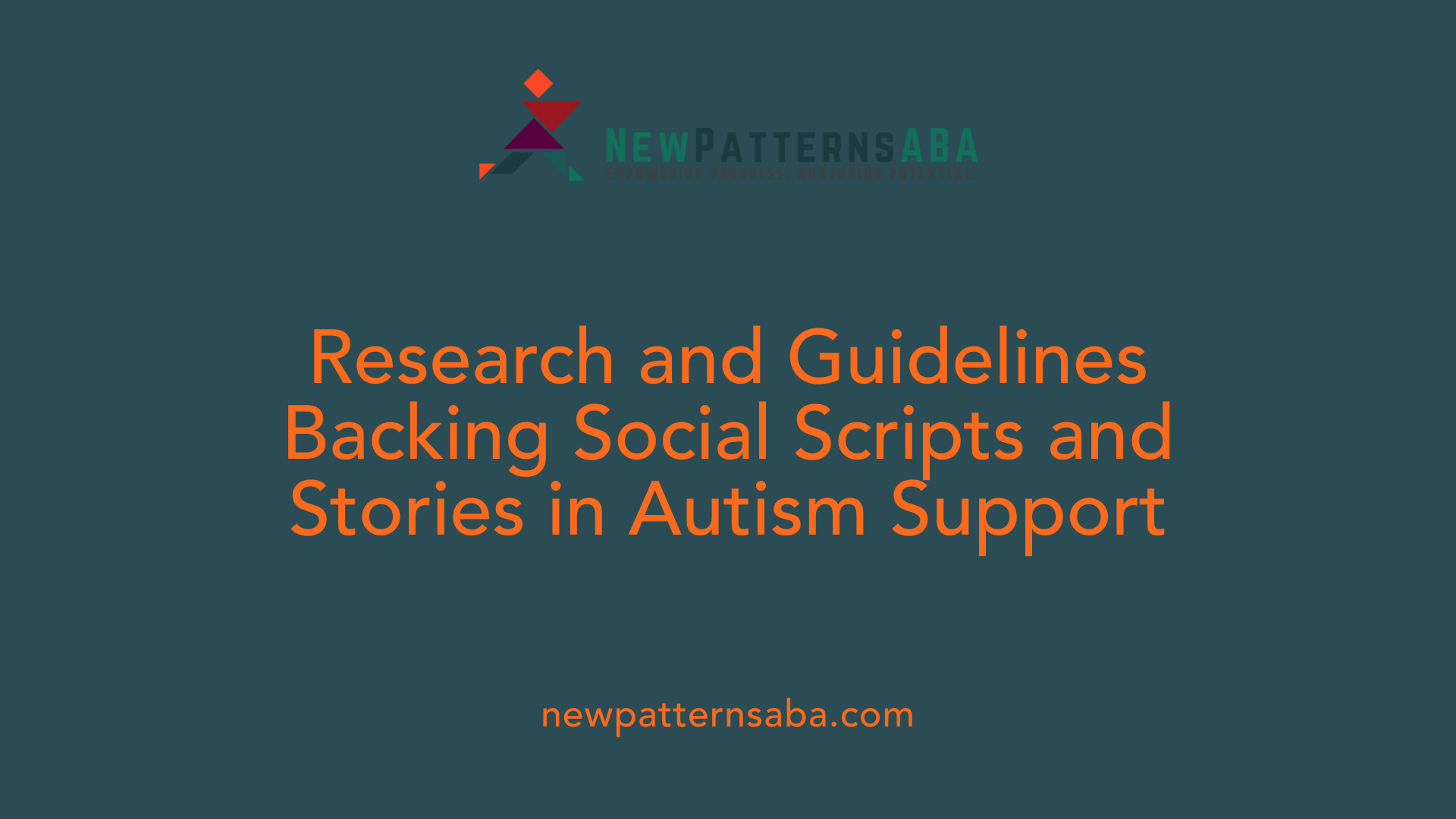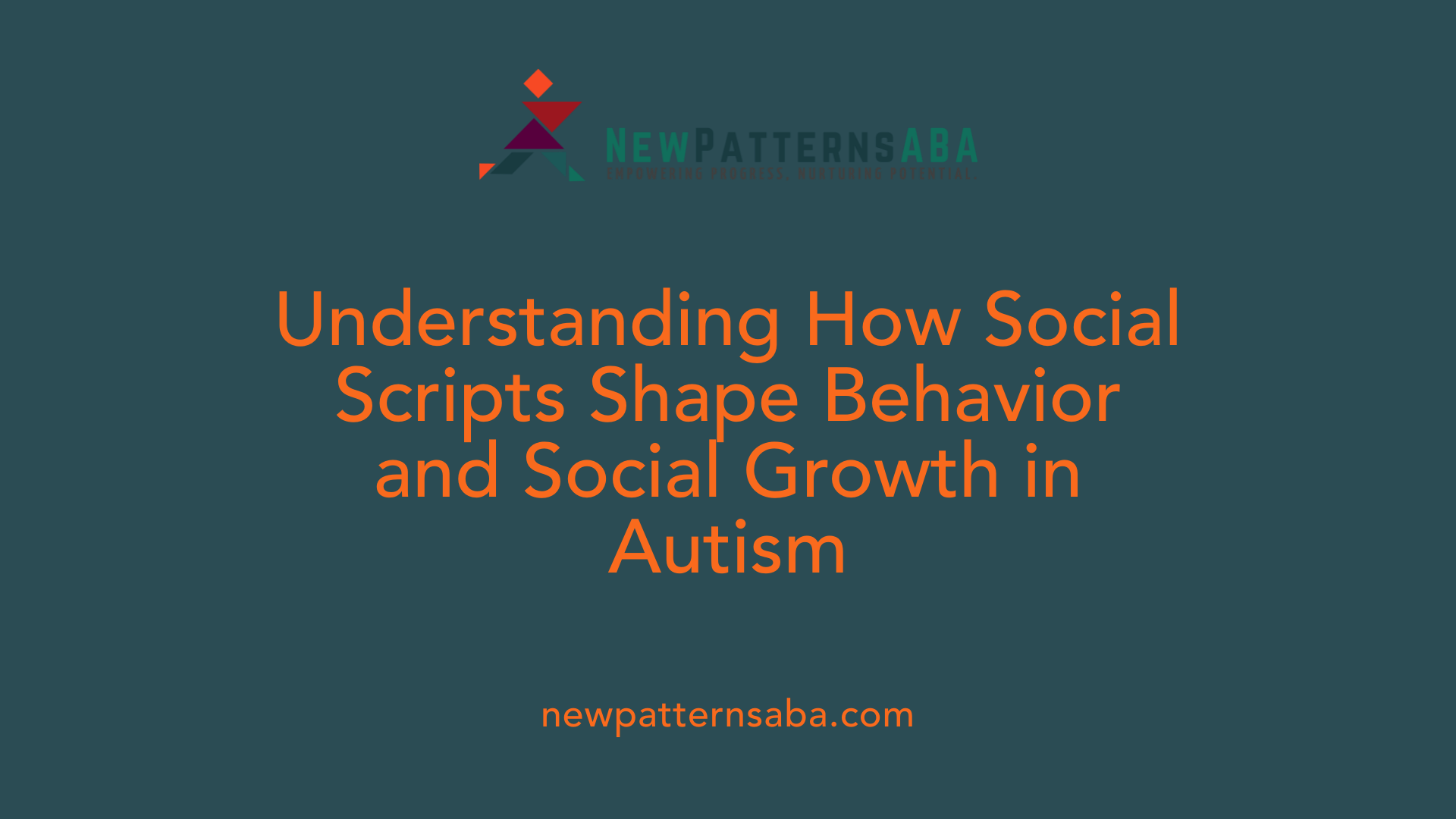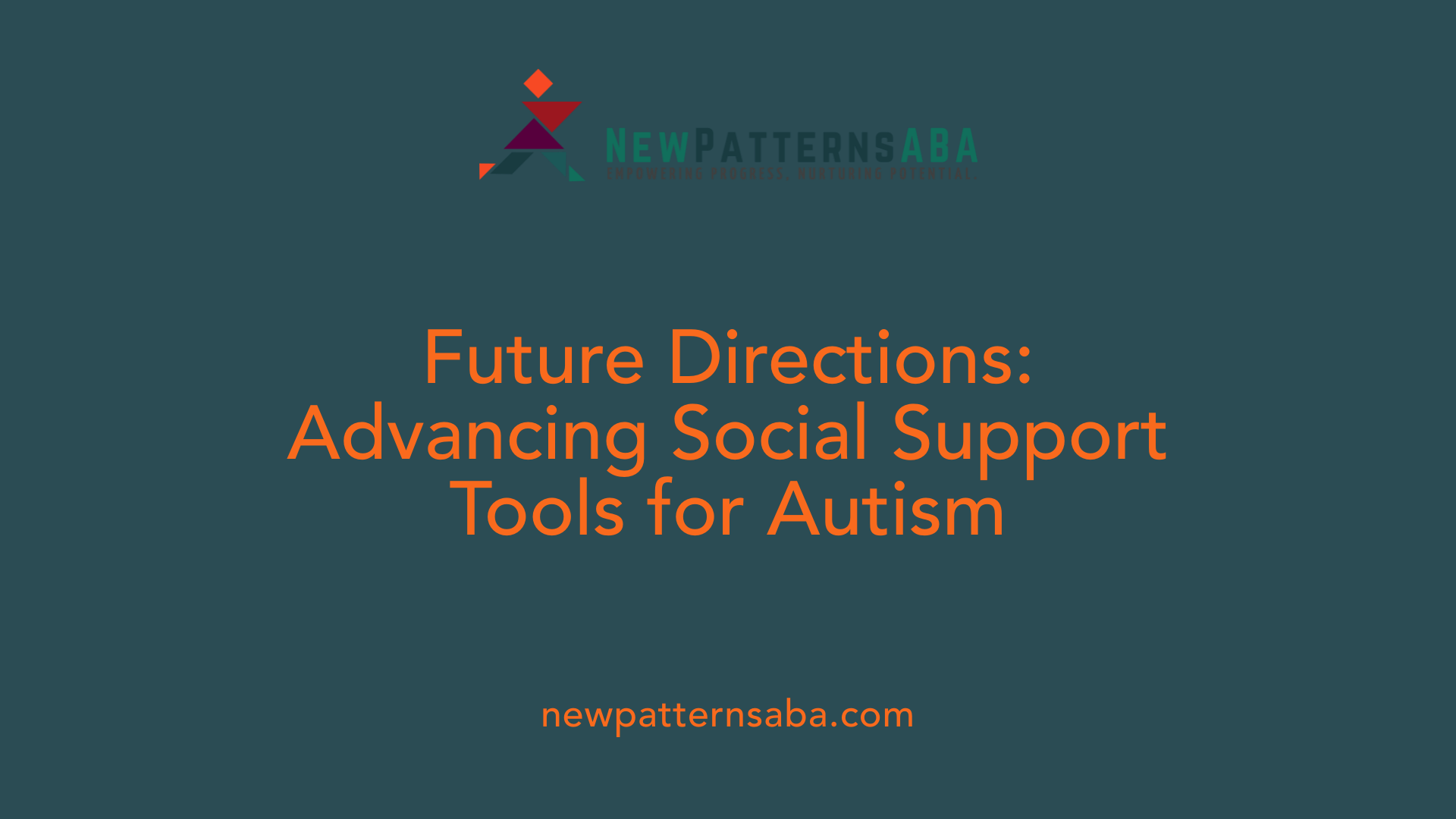Enhancing Social Skills in Autism through Structured Storytelling
Understanding the Power of Social Scripts and Stories
In the realm of autism interventions, social scripts and social stories emerge as foundational tools that promote social understanding and communication. Recognized as evidence-based practices, these tools are tailored approaches designed to address the unique social learning needs of individuals with autism spectrum disorder (ASD). By providing predictable frameworks and visual supports, they help bridge the gap between understanding social cues and engaging successfully in social interactions. This article explores their roles, effective implementation strategies, supporting evidence, available resources, and their impact on behavior and communication.
What Are Social Scripts and Stories and How They Support Autism Communication
What are social scripts and social stories, and how do they support communication in individuals with autism?
Social scripts and social stories are proven tools designed to help individuals with autism better understand, engage in, and navigate social situations. Social stories, also known as social narratives, are short, personalized stories that describe social concepts, expectations, or behaviors in a clear, simple, and positive style. They often include pictures or visual aids to enhance understanding.
Developed by Carol Gray in 1991, social stories serve to explain social cues, routines, or events, equipping autistic individuals with the knowledge to act appropriately and confidently. These stories are typically read before a social event to prepare the person, reducing anxiety and improving participation.
Social scripts are similar but tend to be more structured and may involve verbal or written cues that guide the individual through specific social interactions. They are often crafted for particular situations like greeting someone, asking for help, or taking turns during play.
Both tools are part of evidence-based practices endorsed by organizations like the National Autism Foundation. They are especially effective because they offer explicit, visual, and personalized guidance, making social expectations more predictable and manageable.
Social stories and scripts enhance communication by increasing awareness of social cues, encouraging social initiations, and teaching appropriate responses. They support social understanding, improve interaction skills, and promote independence in various settings such as school, home, or community venues.
Overall, these interventions help bridge the gap between an autistic individual’s current social skills and the skills needed for successful social engagement, making social experiences more accessible and less overwhelming.
Strategies to Improve Social Skills Using Scripting Interventions

How can social scripting interventions improve social skills and communication for individuals with autism?
Social scripting is a well-established approach that helps individuals with autism develop essential social skills and improve communication. By providing clear, structured scripts that outline expected behaviors and responses, this method creates a predictable framework for social interactions. The scripts are often personalized, written in a first-person perspective, and include common phrases or dialogue tailored to specific situations like greeting someone or asking for help.
Through consistent practice of these scripts, children and adults with autism learn to navigate social scenarios more confidently. It reduces their anxiety and uncertainty, making social engagement feel more manageable. As they become familiar with the scripts, they can gradually use them with less prompting, moving toward greater independence.
In addition, incorporating familiar media dialogues or everyday phrases into the scripts can help with language development and emotional recognition. When used alongside other evidence-based practices such as speech therapy and social skills groups, scripting interventions can foster meaningful improvements in social competence, decrease disruptive behaviors, and support inclusion in various social settings.
How important is personalization and situational relevance in social scripts?
Personalization is a critical factor in the effectiveness of social scripts. Scripts that are tailored to an individual's specific situation, age, developmental level, and personal interests are more engaging and easier to understand. They should address real-life situations the individual encounters regularly, such as classroom interactions, community outings, or family routines.
Creating scripts that are relevant to the individual's daily experiences ensures that they are more likely to be used and retained. Visual aids, pictures, or videos can enhance understanding and retention. Customization also involves involving the individual in the script development process, making the dialogue meaningful and based on actual behaviors and responses that are appropriate for the context.
What techniques are effective for teaching and practicing scripts?
Teaching and practicing social scripts involve several step-by-step techniques. Initially, the script should be introduced in a low-pressure setting, with the practitioner modeling the interaction. Use of visual aids or role-playing helps the individual understand and remember the sequences.
Rehearsal is key—repeated practice in real or simulated environments helps solidify the skills. Positive reinforcement encourages engagement and effort. As proficiency increases, prompts and cues can be gradually faded to promote independence. Embedding practice in various settings, such as at school, home, or in community activities, ensures generalization of the skills.
How can fading prompts and promoting independence be managed?
Once the individual becomes comfortable with the scripts, prompts—whether verbal, visual, or physical—should be systematically reduced. This process, known as fading, involves gradually providing less support until the person can perform the social interactions independently.
Strategies include decreasing the prompt intensity, increasing the time between cues, or switching to less obvious cues. It's essential to monitor progress and ensure the individual can reliably use the script with different people and in different settings. Over time, the goal is for the individual to retrieve and use the script spontaneously, leading to greater social independence.
How can scripting be integrated with other evidence-based practices?
Scripting can be combined effectively with other interventions like social skills training groups, Applied Behavior Analysis (ABA), and social stories or narratives. These combined approaches create a comprehensive support system for social development.
For example, social stories can introduce concepts that are later practiced through scripts, while ABA techniques help reinforce correct responses. Social skills groups led by trained professionals provide opportunities for real-life practice and feedback. Incorporating visual supports, modeling, and reinforcement into the scripting process aligns well with these practices, enhancing overall effectiveness.
| Approach | Description | Benefits |
|---|---|---|
| Personalization | Tailoring scripts to individual situations and interests | Increases engagement and relevance |
| Practice | Repeated enactment in supported environments | Builds confidence and skills |
| Fade Prompts | Gradually reducing cues for independence | Promotes autonomy |
| Integration | Combining scripts with stories, groups, and ABA | Creates a comprehensive skill-building plan |
Utilizing these strategies ensures that scripting interventions are accessible, effective, and adaptable across various settings, supporting the goal of improved social communication for individuals with autism.
Research, Guidelines, and Evidence Supporting Social Scripts and Stories

What research and guidelines support the effectiveness of social stories and scripts in autism intervention?
A substantial body of research and professional guidelines endorse the use of social stories and scripts as effective tools in autism support strategies. Studies indicate that these visual and textual supports can significantly enhance social understanding, communication skills, and reduce challenging behaviors such as aggression and off-task activities. Specifically, when social stories are personalized, structured appropriately, and delivered consistently, they become powerful means for teaching social norms.
One notable example is recent research involving a digital platform called the SOFA app, which demonstrated that digitally mediated social stories can produce meaningful and lasting behavioral improvements in educational settings. This pilot randomized controlled trial (RCT) emphasized the importance of customization and engaging format, enabling children with autism to better generalize skills across environments.
The development process of social stories follows Carol Gray’s ten criteria, addressing personalization, positive tone, clarity, and visual supports. These guidelines aim to maximize the stories' effectiveness by making them relevant and easier to understand.
Systematic reviews of social stories show mixed results, partly due to variations in study design and implementation methods. Nonetheless, the National Autism Foundation’s National Standards Report considers story-based social skills interventions as an established practice. They are recommended for their role in increasing social initiations, responses, and understanding.
Overall, professional guidelines underscore the importance of tailoring scripts to each individual child, maintaining consistency in use, and integrating social stories with other evidence-based practices. This comprehensive approach ensures that social scripts work effectively within broader intervention plans.
Resources and Tools to Support Autism Communication

What resources and tools are available to support communication in autism using social stories, scripts, and videos?
A wide range of resources and tools have been developed to enhance communication skills among individuals with autism. These include customizable social stories, visual scripts, and videos designed to model appropriate social behaviors and facilitate understanding. Social stories are written narratives that describe social situations, expectations, and responses, often incorporating pictures to make concepts clearer. They serve to teach social skills, reduce anxiety about unfamiliar situations, and promote positive behavior.
In addition to social stories, various assistive technologies support communication. Devices like the Picture Exchange Communication System (PECS), speech-generating devices, and iPads with specialized apps enable learners to communicate their needs and participate more fully in social interactions. These tools allow for independent expression and can be tailored to a person's developmental level and preferences.
Online resources such as webinars, training modules, and guides provided by organizations like the Autism Response Team (ART) offer practical advice on using digital tools effectively. Such resources help caregivers and practitioners learn how to incorporate smartphones, tablets, and other digital devices into daily routines.
Visual supports, including communication boards, schedules, and social narratives, serve as structured tools that clarify expectations and facilitate understanding. For example, visual schedules help children anticipate upcoming activities, reducing behavioral challenges and increasing engagement.
Selecting and implementing these resources typically involves collaboration with professionals—speech therapists, behavior analysts, and educators—who can tailor interventions based on individual needs. This personalized approach optimizes the effectiveness of tools like social stories, videos, and assistive devices.
| Resource Type | Description | Ideal Use Cases | Additional Details |
|---|---|---|---|
| Social Stories | Personalized narratives depicting social situations with visuals | Teaching social skills, reducing anxiety | Developed by Carol Gray, should be reviewed by professionals |
| Videos and Visual Supports | Model social interactions and concepts through engaging content | Promoting understanding and imitation | Free resources available online, including libraries of videos |
| Assistive Technologies | Tablets, apps, speech-generating devices | Facilitating communication and independence | Numerous apps support picture-based and text-based communication |
| Webinars and Training | Online courses on digital communication tools | Educator and caregiver training | Offered by autism organizations to enhance tool use |
These resources are part of a comprehensive approach to support social communication in autism. When chosen carefully and used consistently, they can greatly improve the ability of individuals with autism to participate meaningfully in social contexts.
The Impact of Social Scripts on Behavior and Social Development

How do social scripts contribute to behavior change and social skill development in individuals with autism?
Social scripts play a crucial role in fostering positive changes in behavior and enhancing social skills among individuals with autism. They function as structured, personalized narratives that model appropriate social interactions, making complex social cues more understandable and accessible.
Based on principles from behavioral, social learning, and cognitive theories, these scripts help teach vital skills such as recognizing emotions, initiating conversations, understanding social norms, and solving problems within social contexts. When a person practices these scripts regularly, they begin to internalize the behaviors, which leads to greater social engagement and reduced instances of disruptive or inappropriate actions.
Moreover, social scripts are adaptable to different environments like home, school, or community settings. They can be presented in various formats—written, visual, or auditory—to meet individual learning preferences. This flexibility makes them effective tools for diverse learners across the autism spectrum.
In addition to their standalone use, social scripts work best when integrated into broader behavior support strategies. They can be combined with other evidence-based practices such as social stories, video modeling, or peer-mediated interventions. When augmented with technological aids like computer-based programs, virtual avatars, or apps, scripts become even more engaging and realistic.
The outcomes of using social scripts are significant. They contribute to greater independence by enabling individuals to navigate social situations more confidently. Over time, they promote social participation and help develop essential life skills, supporting long-term positive behavioral trajectories.
In conclusion, social scripts are accessible and flexible interventions that have shown to positively influence social communication and behavior in individuals with autism. Their ability to be tailored to individual needs and settings underscores their value within comprehensive autism support plans.
Conclusion and Future Directions in Using Social Support Tools

What impact do social scripts have on communication styles and behavioral support strategies in autism?
Social scripts, including social stories and social skills training (SST), play a vital role in shaping communication and behavior support strategies for individuals with autism. These tools promote clearer, more predictable interactions by teaching appropriate responses and social norms in a personalized way. They help individuals understand social cues, perspectives, and expected responses, reducing behaviors like aggression, off-task actions, and inappropriate comments.
Social stories, in particular, serve as effective educational aids that enhance social understanding. They often include visual supports and straightforward language, making complex social concepts accessible. When integrated with other supportive methods like visual schedules or prompting, social scripts facilitate the transfer of learned skills across different settings, supporting generalization.
Research indicates that structured social scripting interventions improve social participation, reciprocity, and communication abilities. They contribute to better engagement in social environments and help individuals with autism develop more adaptive and functional behaviors. This integration aligns well with occupational therapy goals aimed at fostering independence, community participation, and positive social interactions.
Practical considerations for practitioners
When implementing social scripts, practitioners should focus on creating simple, consistent narratives tailored to each individual’s needs. Developing these scripts involves gathering detailed insights into the person's behaviors and social challenges, and then customizing stories to reflect specific situations.
Adapting social scripts for diverse levels of functioning is essential for maximizing their effectiveness. Professional collaboration—especially review and input from speech-language pathologists and behavioral specialists—can ensure the scripts' language level and content suitability.
Using visual aids, such as pictures and videos, enhances understanding and engagement. Consistent practice across multiple settings, including classrooms, therapy sessions, and home environments, helps generalize skills. Incorporating feedback and regularly reviewing intervention progress are vital to refining the approach.
Emerging research and innovations
Looking ahead, research continues to explore the efficacy of social scripts, with a growing emphasis on rigorous, controlled studies to strengthen evidence. Advances in technology, such as interactive digital stories, apps, and virtual reality, present exciting opportunities for creating immersive and customizable social scripting tools.
Innovation also includes integrating social scripts within broader, evidence-based programs like PEERS or social skills groups facilitated by diverse professionals. Personalizing stories with multimedia elements and real-life practice strategies promises to enhance engagement and skill retention.
Furthermore, ongoing developments aim to adapt social scripting interventions for individuals across the entire autism spectrum, including those with significant communication challenges. Research into neurodevelopmental differences and sensory considerations will support more tailored, effective interventions.
As the field progresses, sharing resources--such as accessible social story libraries, training modules, and digital platforms--will be crucial for broad dissemination. Ultimately, combining evidence-based social supports with emerging technologies and individualized practices holds great promise for enhancing social communication and participation for individuals with autism.
Building a Foundation for Social Success
The integration of social scripts and stories into autism intervention strategies offers promising avenues for enhancing social communication, reducing disruptive behaviors, and fostering greater independence. Supported by rigorous research and guidelines, these tools can be adapted to meet diverse needs and settings. As technology advances and more tailored resources become available, practitioners are encouraged to incorporate these evidence-based practices thoughtfully, ensuring that each individual's social journey is both effective and engaging. Continued research and innovation will further solidify their role in creating inclusive, supportive environments for individuals with autism.
References
- Simple Social Scripts That Work
- Teaching Social Scripts to Improve Social Communication ...
- “A scoping review: Social stories supporting behavior ...
- Free library of Social Stories for Autism
- Social skills and autism
- Teaching Social Scripts to Improve Social Communication ...
- Behavioral Issues and the Use of Social Stories: Articles
- Social stories and autism
- Social skills and autism






